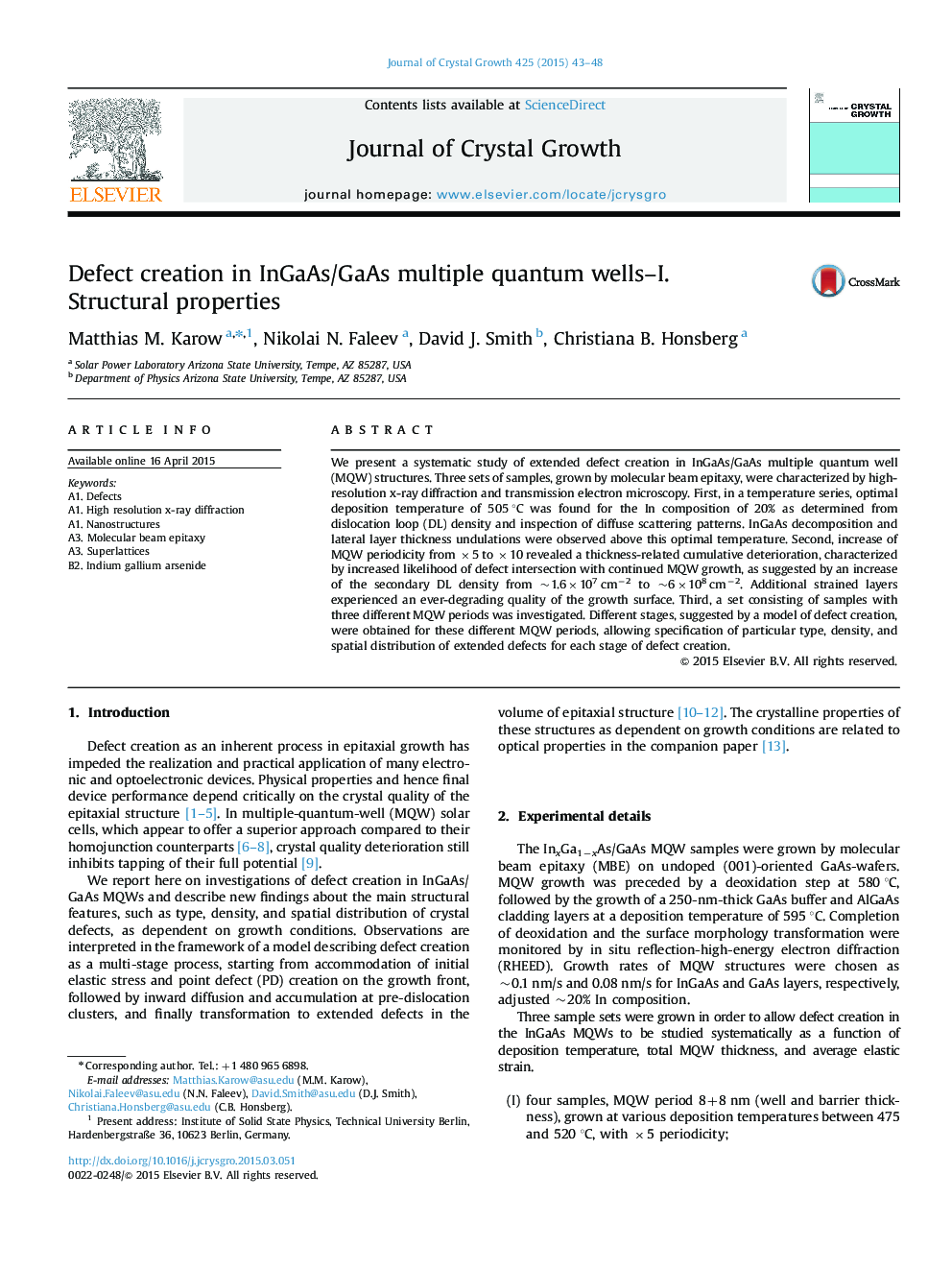| Article ID | Journal | Published Year | Pages | File Type |
|---|---|---|---|---|
| 8149625 | Journal of Crystal Growth | 2015 | 6 Pages |
Abstract
We present a systematic study of extended defect creation in InGaAs/GaAs multiple quantum well (MQW) structures. Three sets of samples, grown by molecular beam epitaxy, were characterized by high-resolution x-ray diffraction and transmission electron microscopy. First, in a temperature series, optimal deposition temperature of 505 °C was found for the In composition of 20% as determined from dislocation loop (DL) density and inspection of diffuse scattering patterns. InGaAs decomposition and lateral layer thickness undulations were observed above this optimal temperature. Second, increase of MQW periodicity from Ã5 to Ã10 revealed a thickness-related cumulative deterioration, characterized by increased likelihood of defect intersection with continued MQW growth, as suggested by an increase of the secondary DL density from ~1.6Ã107 cmâ2 to ~6Ã108 cmâ2. Additional strained layers experienced an ever-degrading quality of the growth surface. Third, a set consisting of samples with three different MQW periods was investigated. Different stages, suggested by a model of defect creation, were obtained for these different MQW periods, allowing specification of particular type, density, and spatial distribution of extended defects for each stage of defect creation.
Keywords
Related Topics
Physical Sciences and Engineering
Physics and Astronomy
Condensed Matter Physics
Authors
Matthias M. Karow, Nikolai N. Faleev, David J. Smith, Christiana B. Honsberg,
